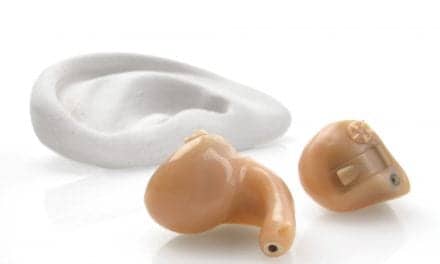The battle against the cultural stigma of hearing aids is far from over. One 2020 study found that children as young as 6 years old had the “hearing aid effect.” The cultural stigma against hearing aids adds to it growth as a public health problem. About 38-million-plus Americans deal with some level of hearing loss, but only a fraction get help.
The Hearing Loss Association of America estimates that only 1 in 5 people who could benefit from hearing aids own them. Adding another barrier to adoption is the affordability factor. Hearing aids are often not covered under traditional Medicare, and although they are increasingly covered under Medicare Advantage plans, their purchase still requires a substantial out-of-pocket cost. The average price of a hearing aid in 2018 was $2372, which means the cost of a binaural set of hearing aids can likely exceed $5000.
So how can hearing care providers appeal to a younger audience and promote care-seeking behavior when they need it the most? The Hearing Review compiled three tips on how to engage a younger audience with the right message.
1) Offer Flexible Financing
For many Americans, hearing aids are not covered by their insurers. That’s why offering patient financing options is critical in the hearing business.
In an interview with Hearing Review, Chris Klemick, head of Enterprise Sales at Ally Lending, said retailers like Amazon have shifted patient expectations toward a “ready purchase”. “[These expectations] have expanded into the unsecured patient financing lending space. Consumers want to purchase a hearing aid, much like they would purchase a pair of sneakers online,” says Klemick. “We’re adapting our workflow and product to fit this growing trend.”
In the same article, Dan Quall, director of Strategic Initiatives at Fuel Medical, Camas, Wash, says, “Paying a monthly fee and having access to that product or service is probably more acceptable than writing a check for $4000.”
If your goal is to grow your younger patient audience, then start by meeting their payment preferences.
2) Listen Up and Know Your Audience!
It starts with understanding your target audience. As Michele Ahlman, CEO of Clear Digital Media, which runs the Hearing Health News Network, states: “Your target audience may not always be the prospective patient. It may be their family, friends, employers, or other influencers.”
Whether you’re investing in digital advertising or relying on word of mouth, capturing a more diverse patient base is easier when you know how they consume content. For instance, does the data you have access to show younger audiences finding your practice through social media platforms or print ads?
Related article: Keeping It Simple: Practical Online Marketing Tips for Differentiating a Hearing Care Practice
Taking a design-thinking approach or starting from empathy to understand the customer’s challenges, wants, and needs can help you connect better with a wider range of patients in the various demographics that need hearing help.
3) Promoting the Importance of Hearing Care
Not only should providers focus on finding ways to provide a more individualized experience that meets the needs, but also recognize the trends that they care about. Hearing care professionals should also be looking at intervening earlier in the patient journey, providing assistance to those who complain about hearing problems even though they may have mild losses or near-normal hearing.
Certainly, better hearing is increasingly connected to better health. Health and fitness are a high priority for younger working-age people. A recent article in Consumer Affairs highlights the fact that Millennials and Generation Z spend an average of $124 per month on fitness and 76% of young people have a gym membership. Numerous studies have linked untreated hearing loss to a variety of chronic health conditions, including cardiovascular problems, poorer marital/conjugal relationships, social isolation and loneliness, falls and balance issues, and even earlier death!
The variety and allure of advanced features in hearing aids—including the wireless streaming directly from a smartphone and the ability to give voice commands to Siri and Alexa—are transforming hearing aids from a prosthetic device into a cool multifaceted communication and online assistant. The technologically advanced enhancements in the latest generation of hearing aids provide may turn out to be the most critical factor in persuading younger people with milder hearing losses to purchase a hearing aid. With the current innovations in hearing aids and amplification options, the days of a hearing aid making someone appear old should be numbered. Whether it’s modifying your practice strategies, developing targeted audiences, and working to nurture those leads, practice managers today can add flexible financing and audience development to their practice management toolbox.
About the author: Yoona Ha is a freelance writer covering healthcare news, and wrote this article for The Hearing Review‘s enewsletter sponsored by Ally Lending.






